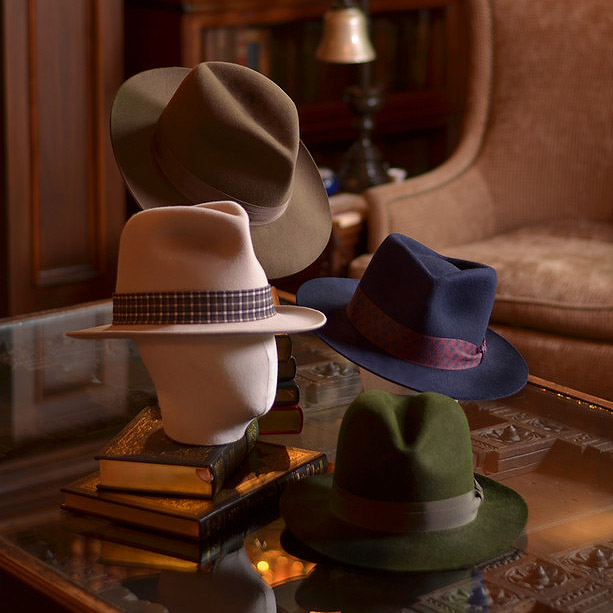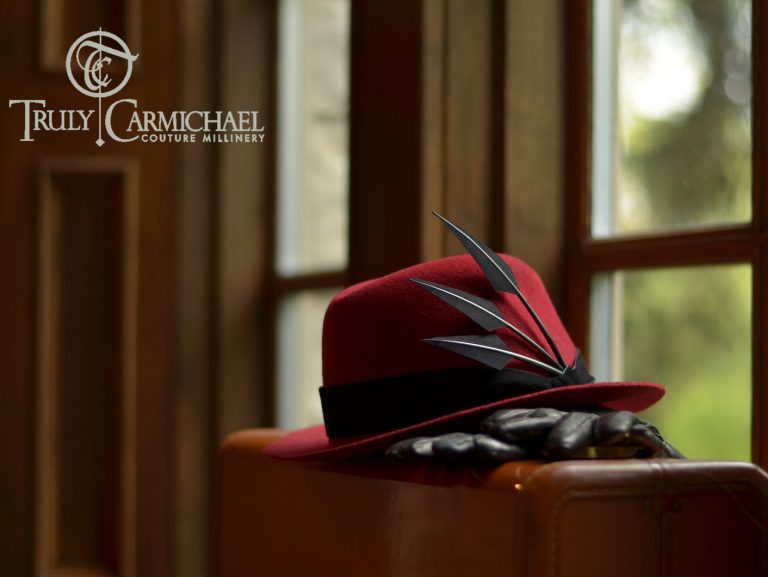◆ Fedora Gallery ◆

This style of hat got its name from an 1887 production of the play Fédora starring Sarah Bernhardt. Famous for defying fashion’s gender restrictions, Bernhardt wore a mannish, center-creased, soft-brimmed hat as part of her costume. Women’s-rights activists promptly embraced the style as a symbol of female empowerment. In the first half 20th century the felt fedora grew popular among both men and women, which effectively transitioned it from symbolizing assumed masculinity to being simply thought of as “masculine.”
As a fashion history enthusiast, I enjoy both recreating fedora styles from historical images and creating decidedly modern versions with asymmetrical lines and freshly styled attitudes.
◆
◆


